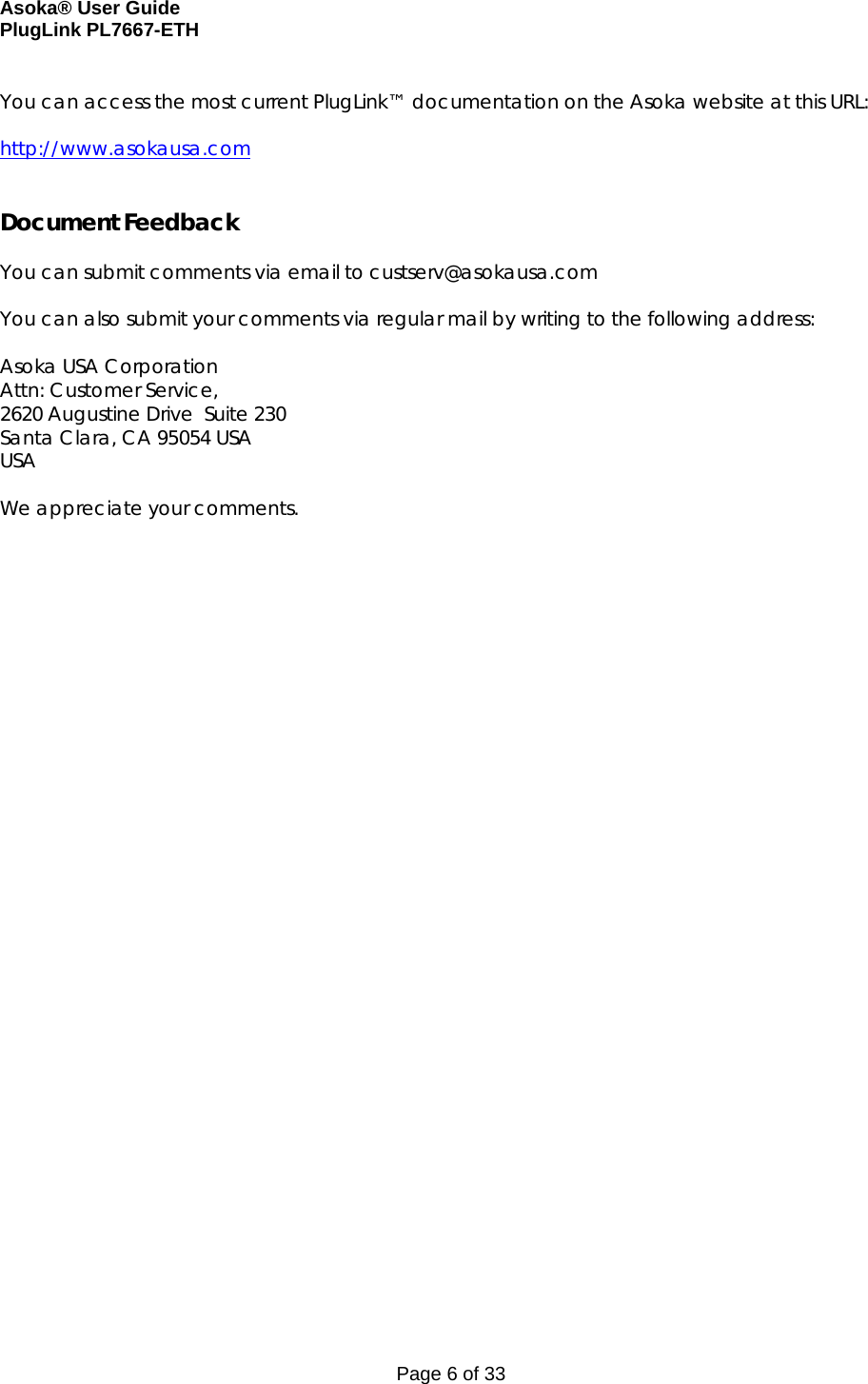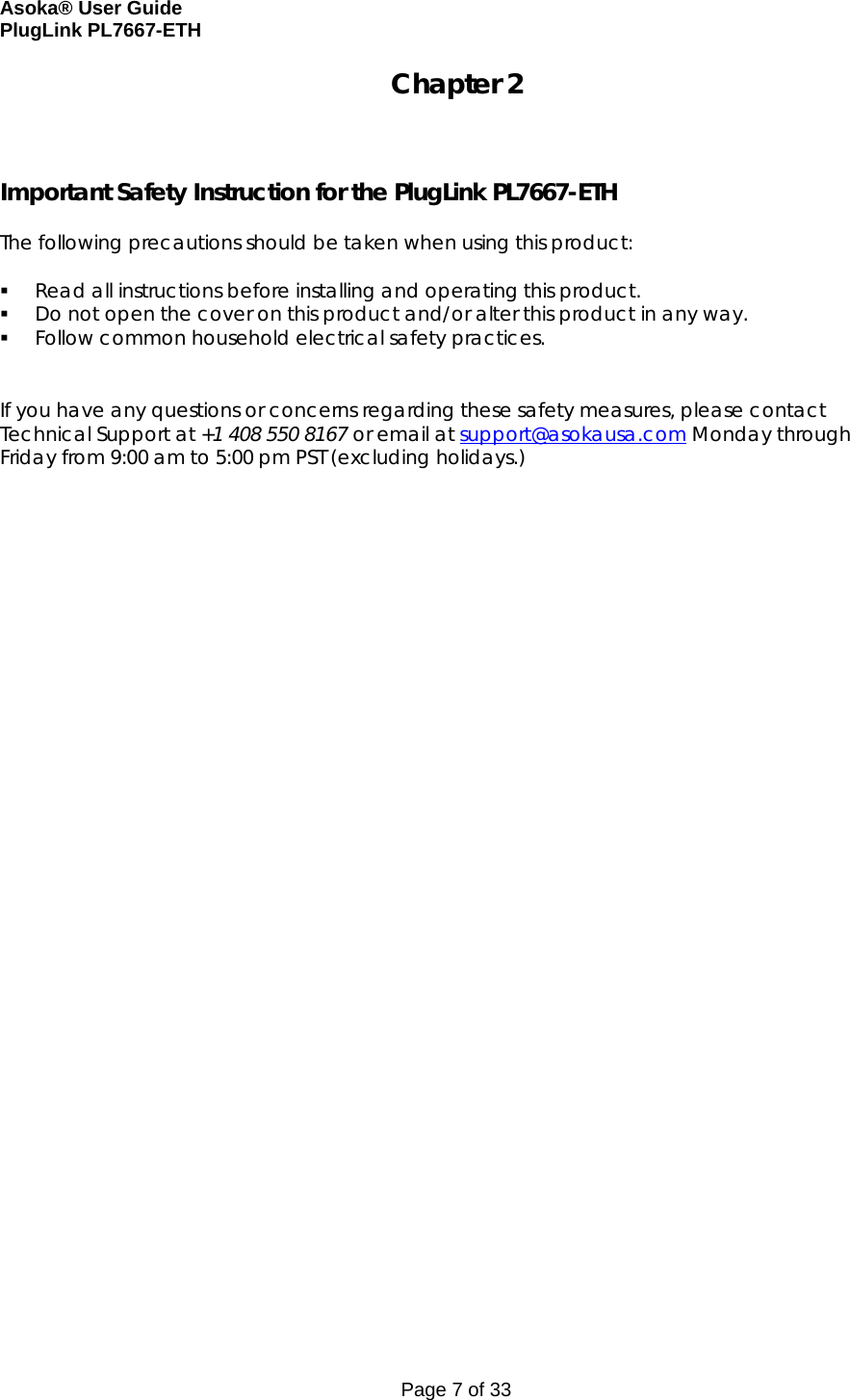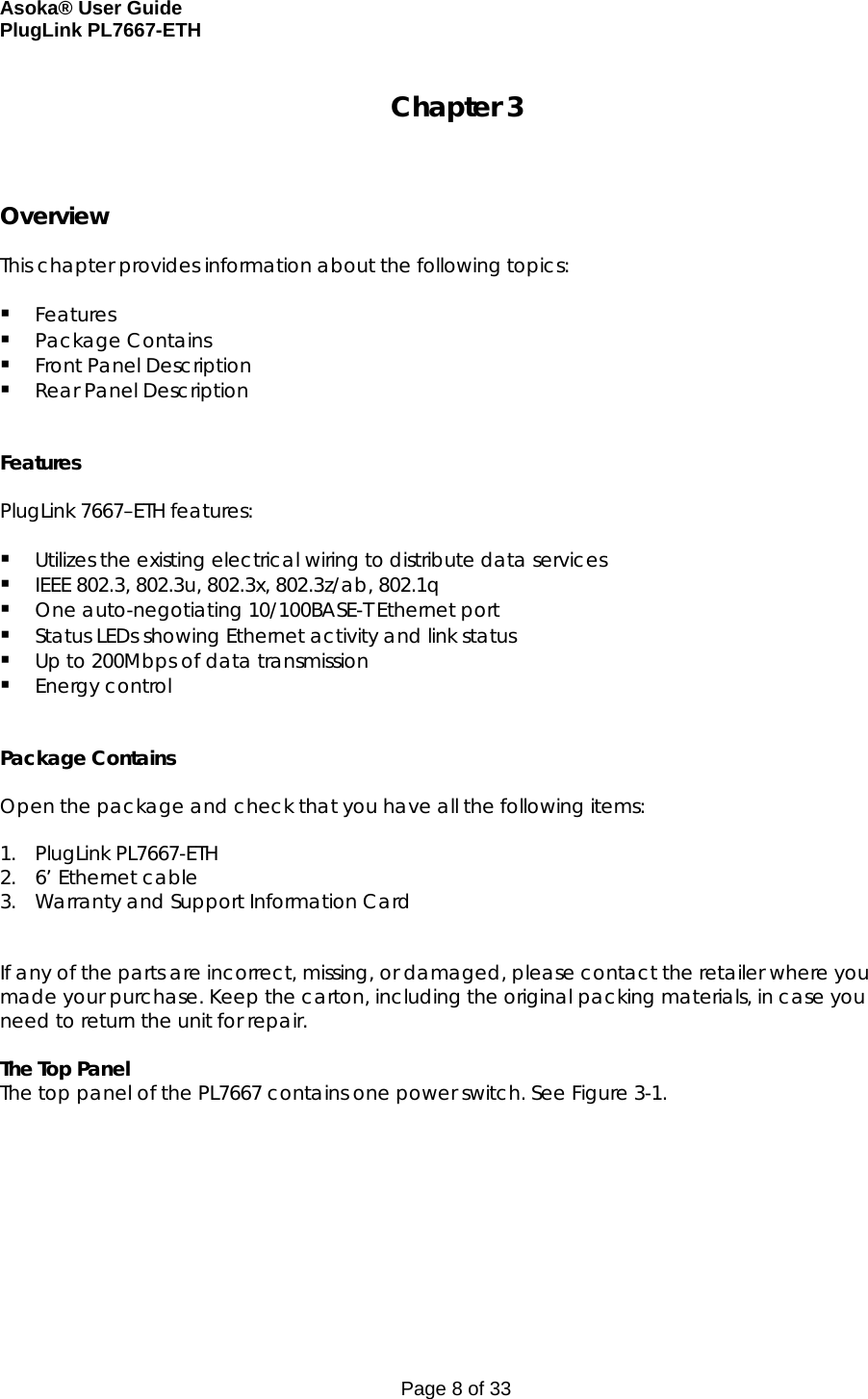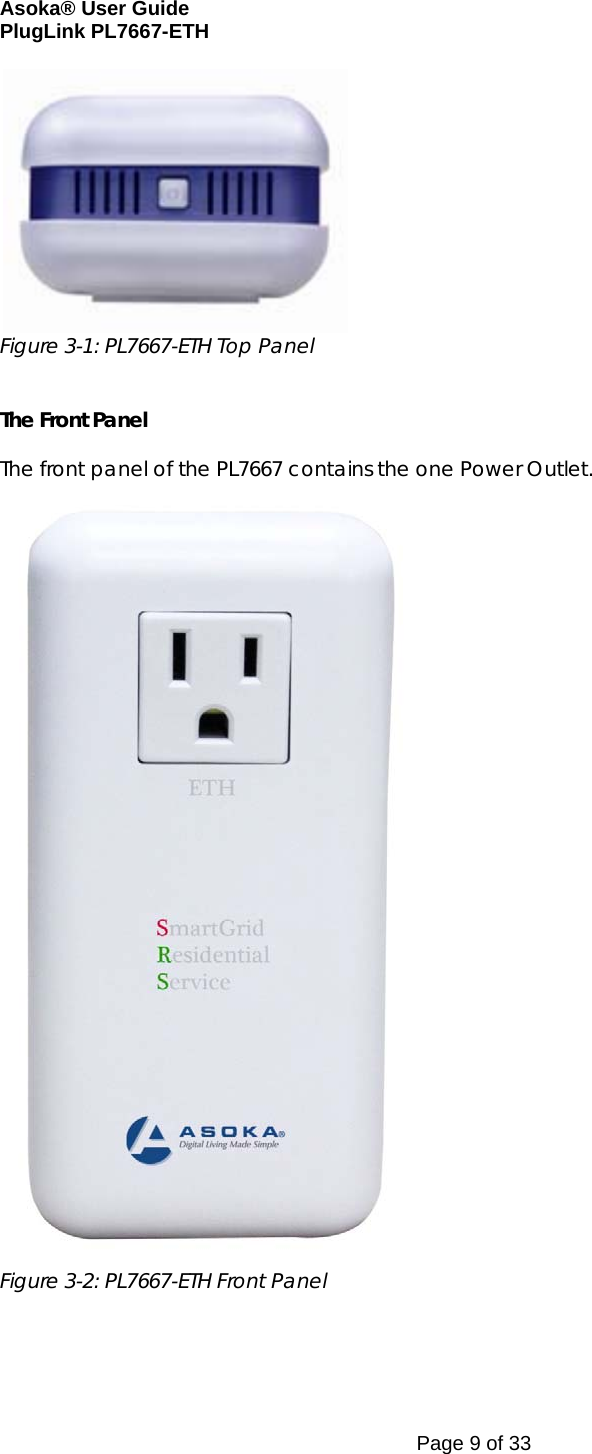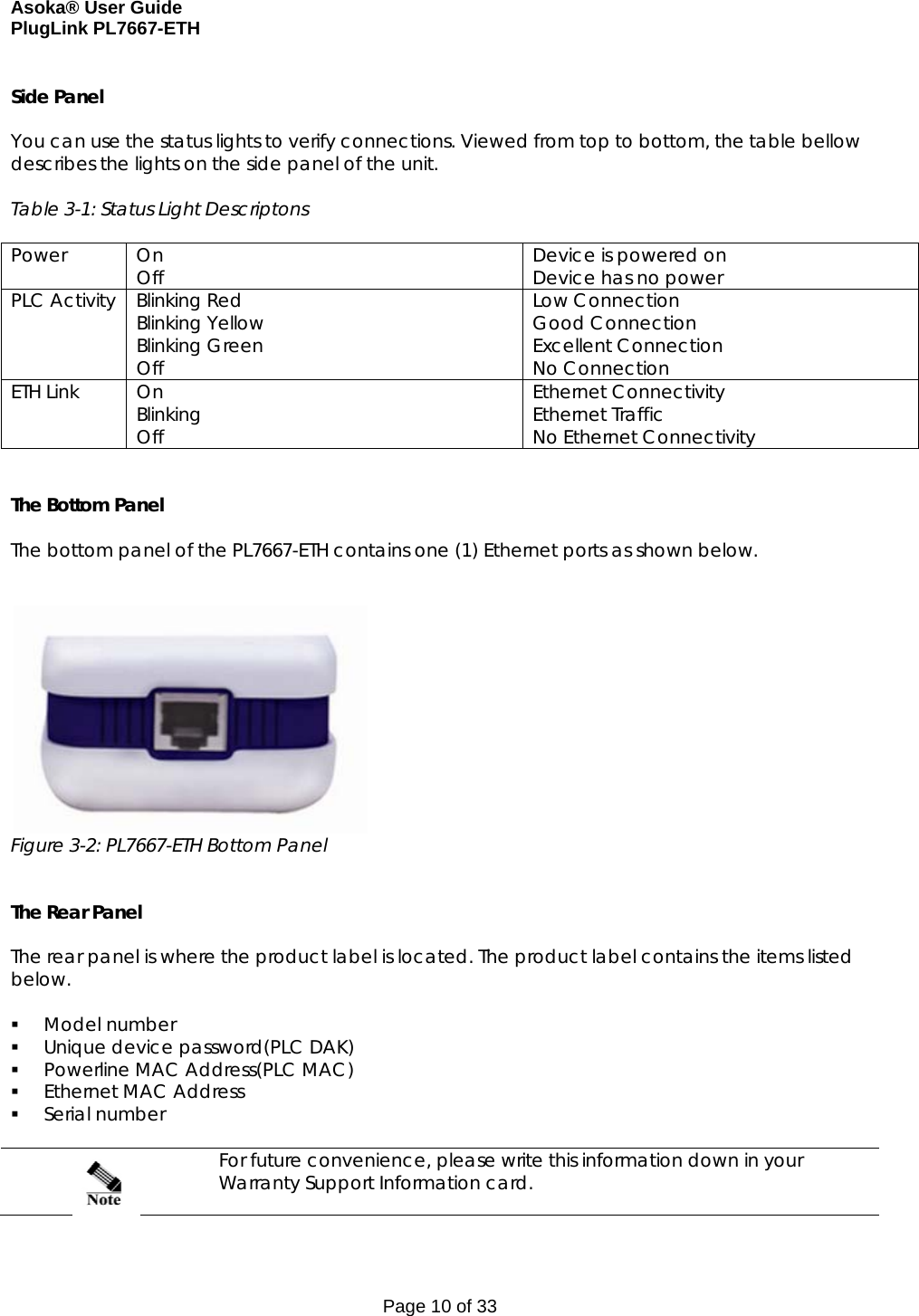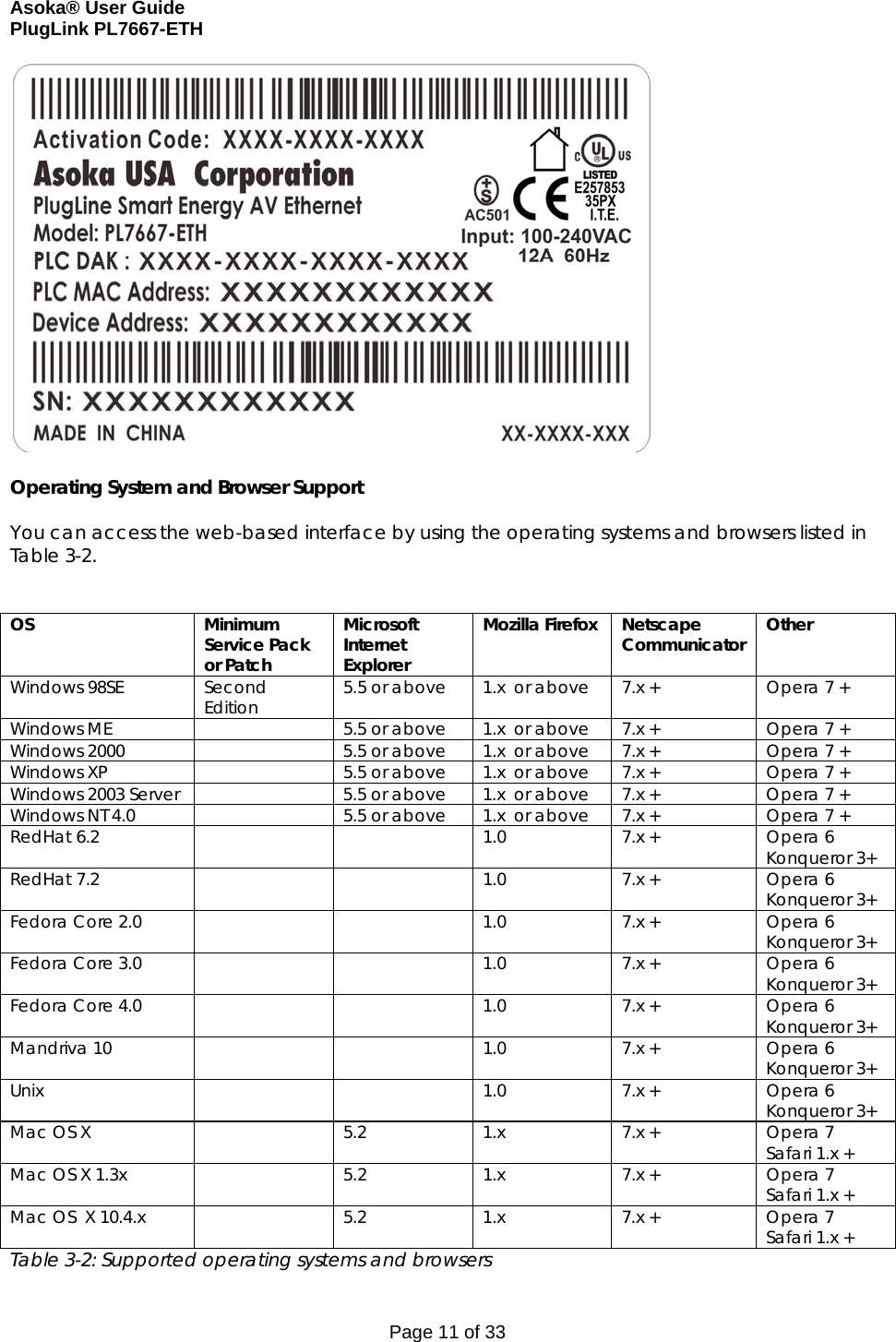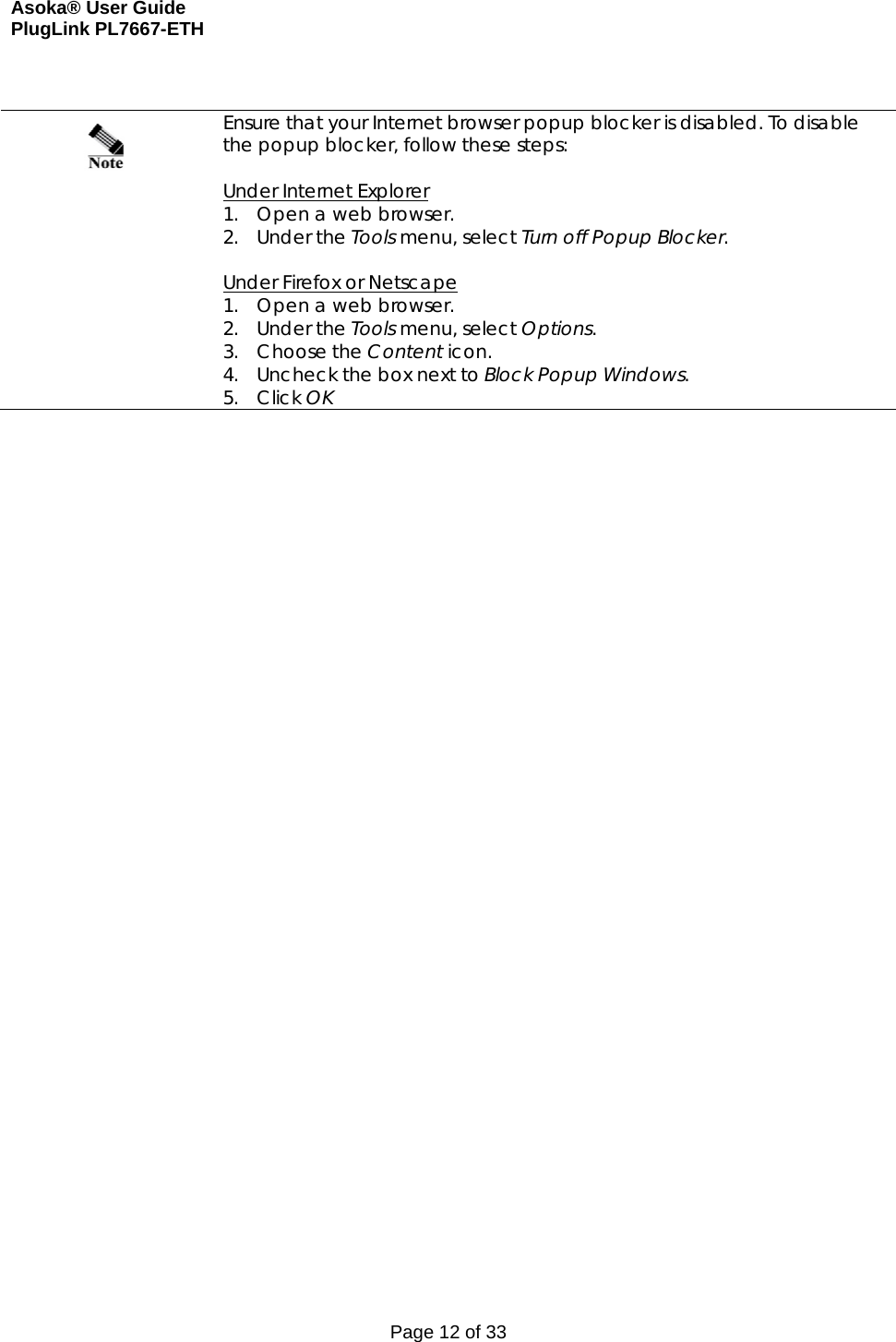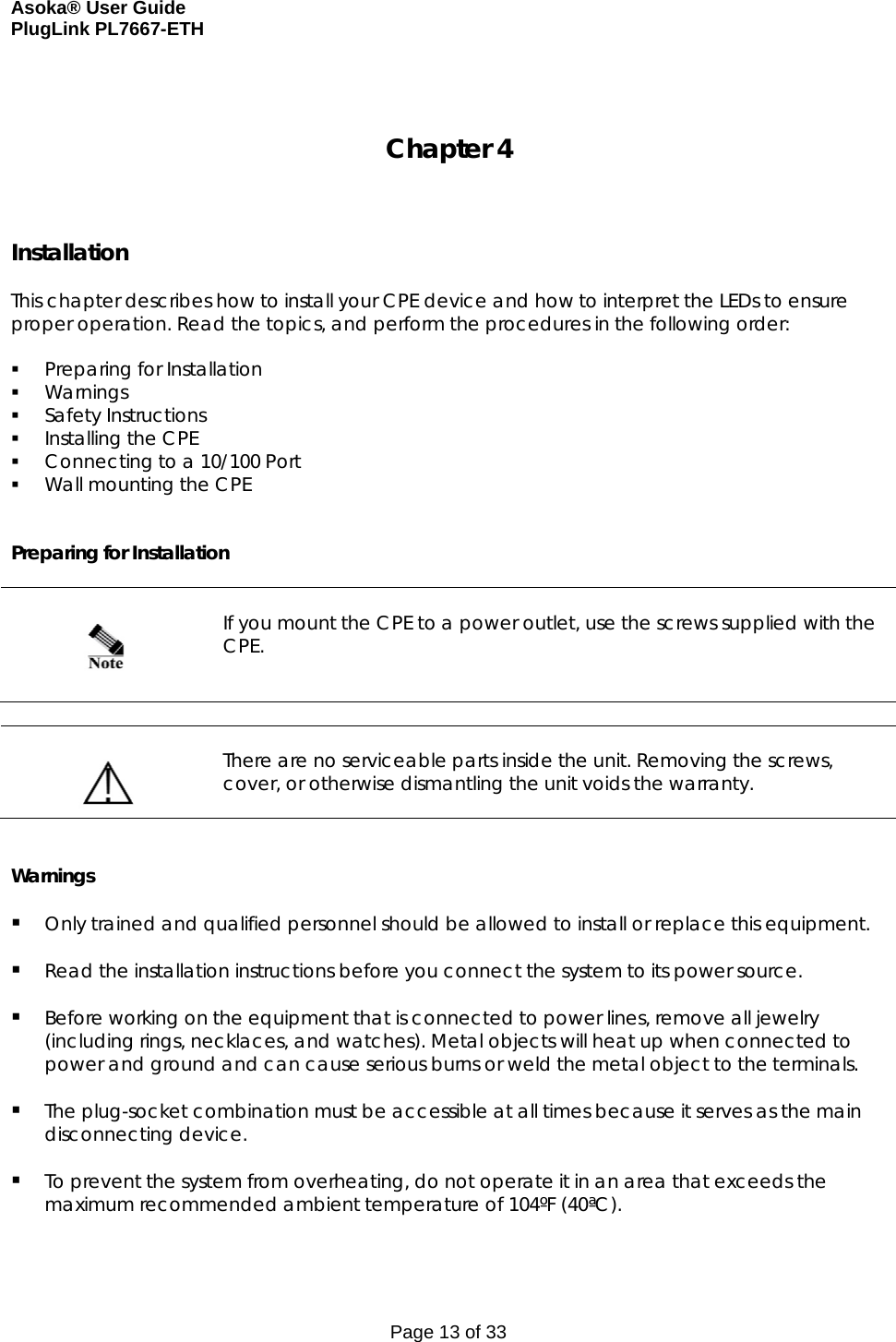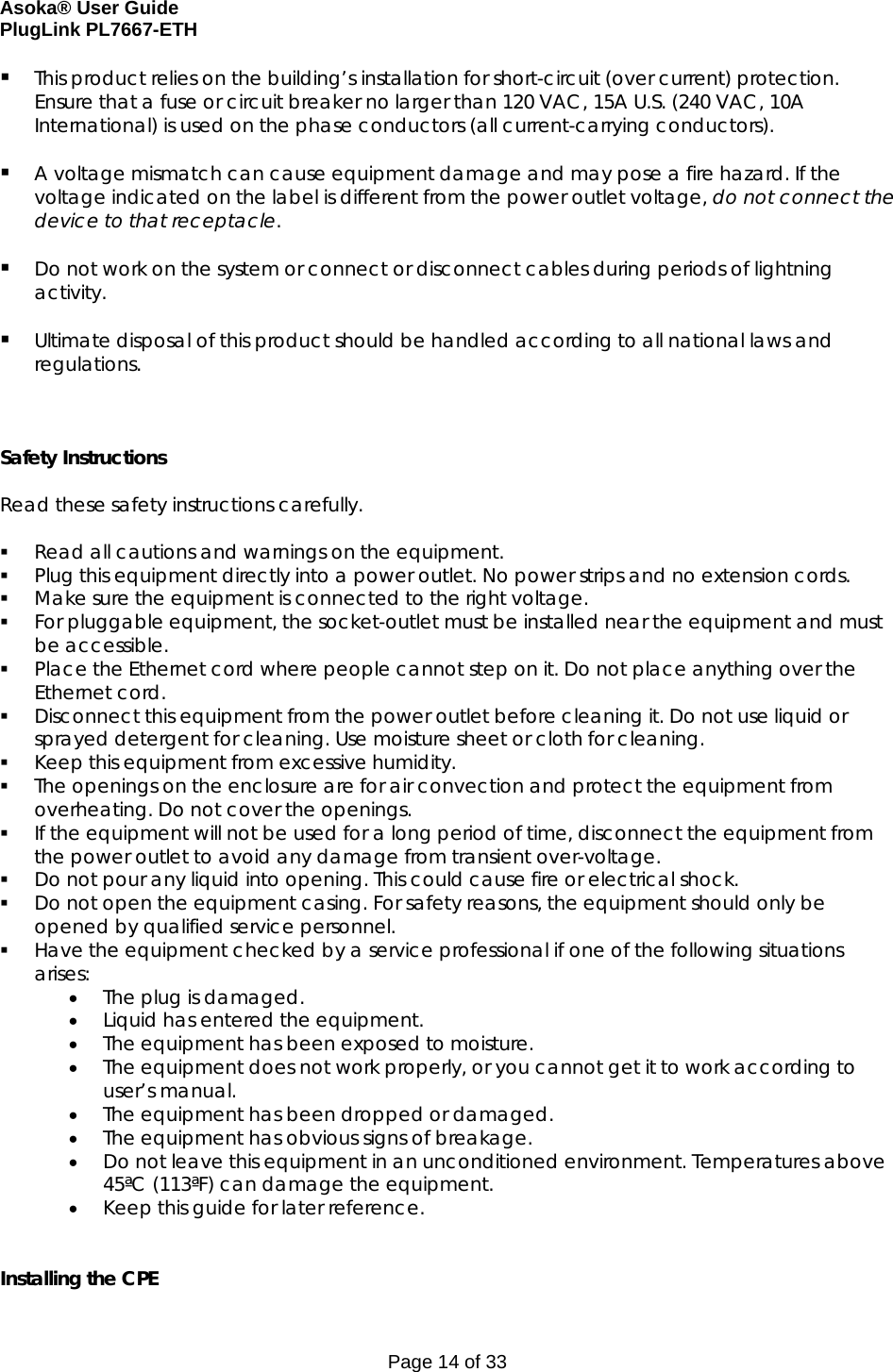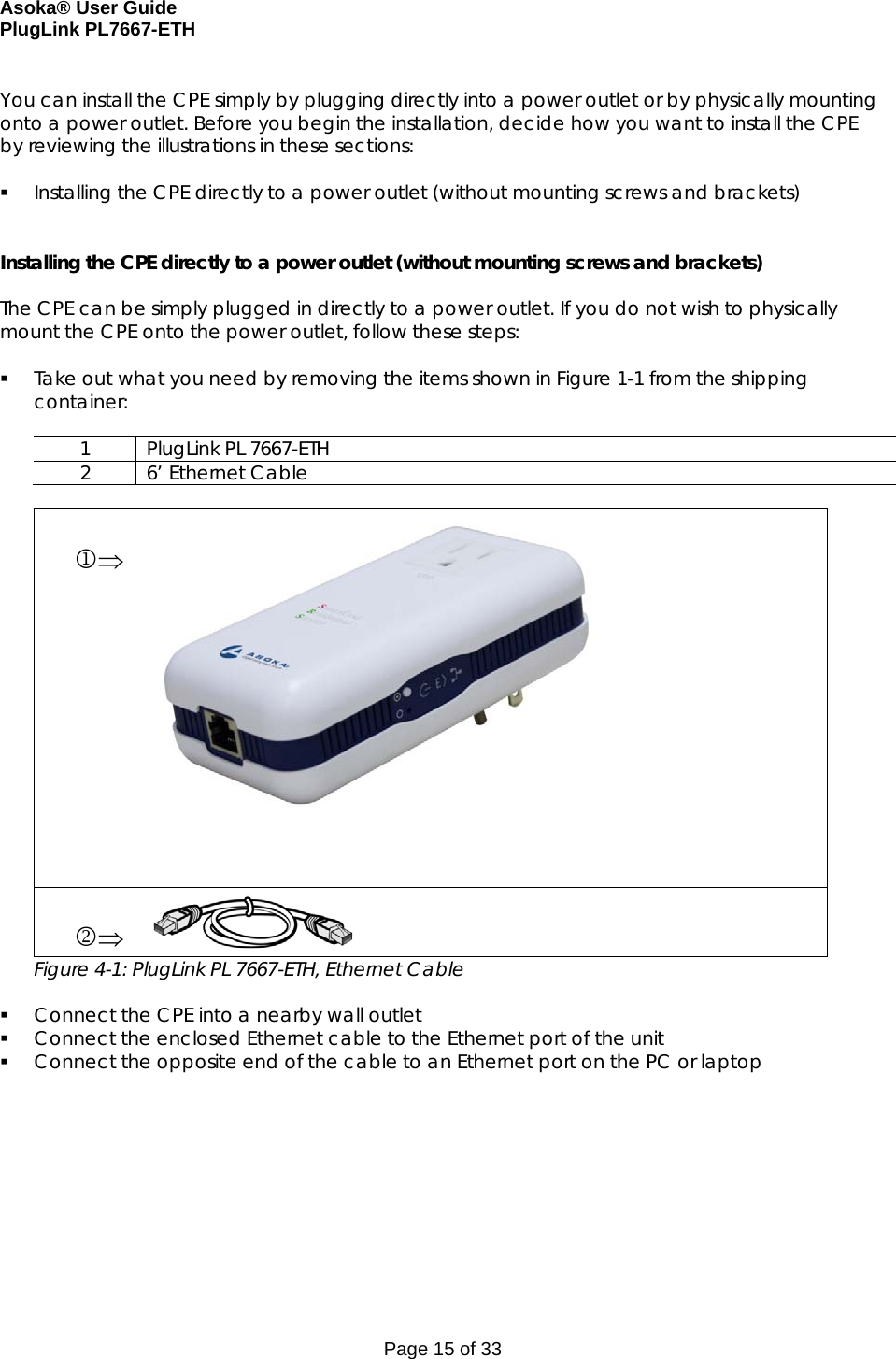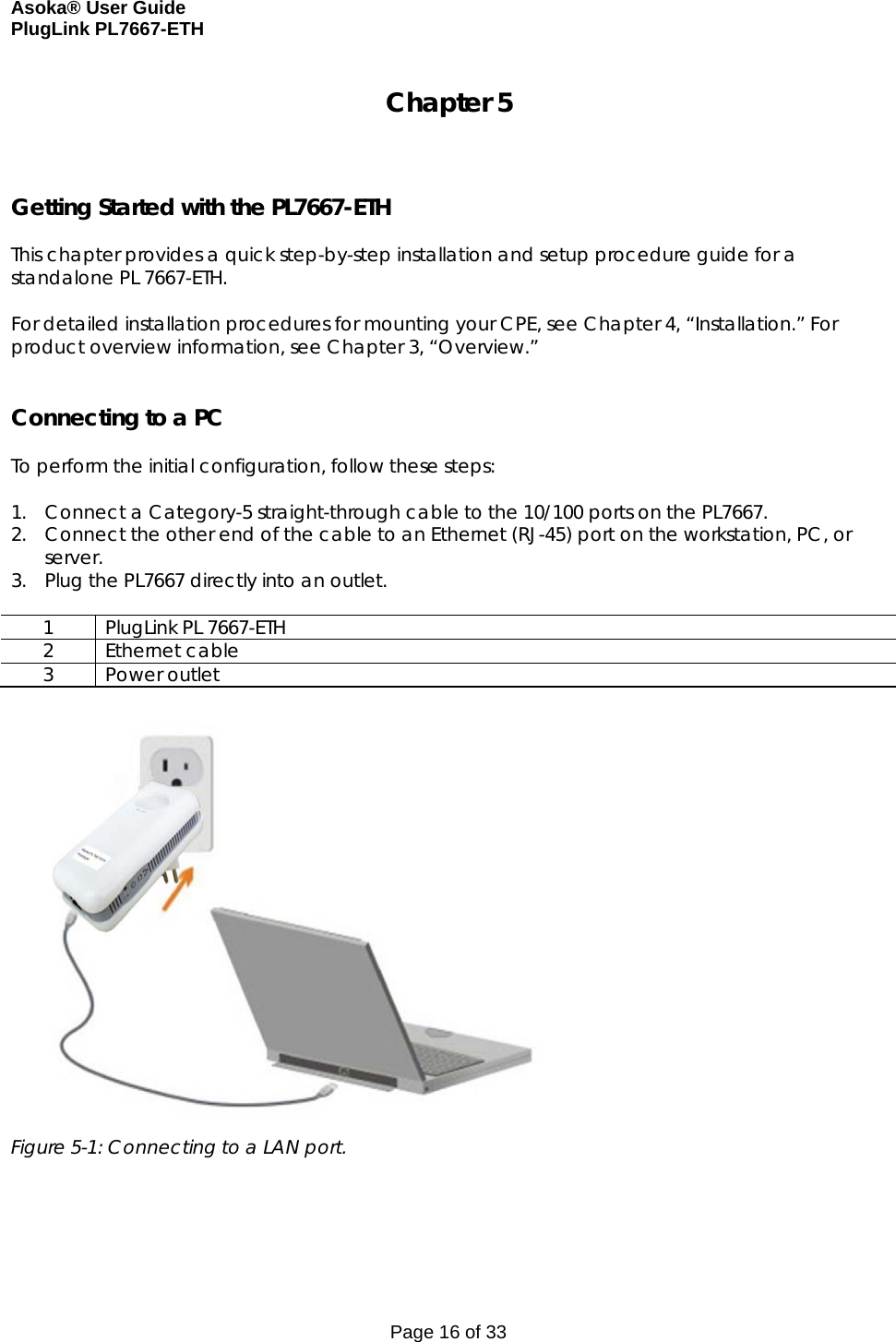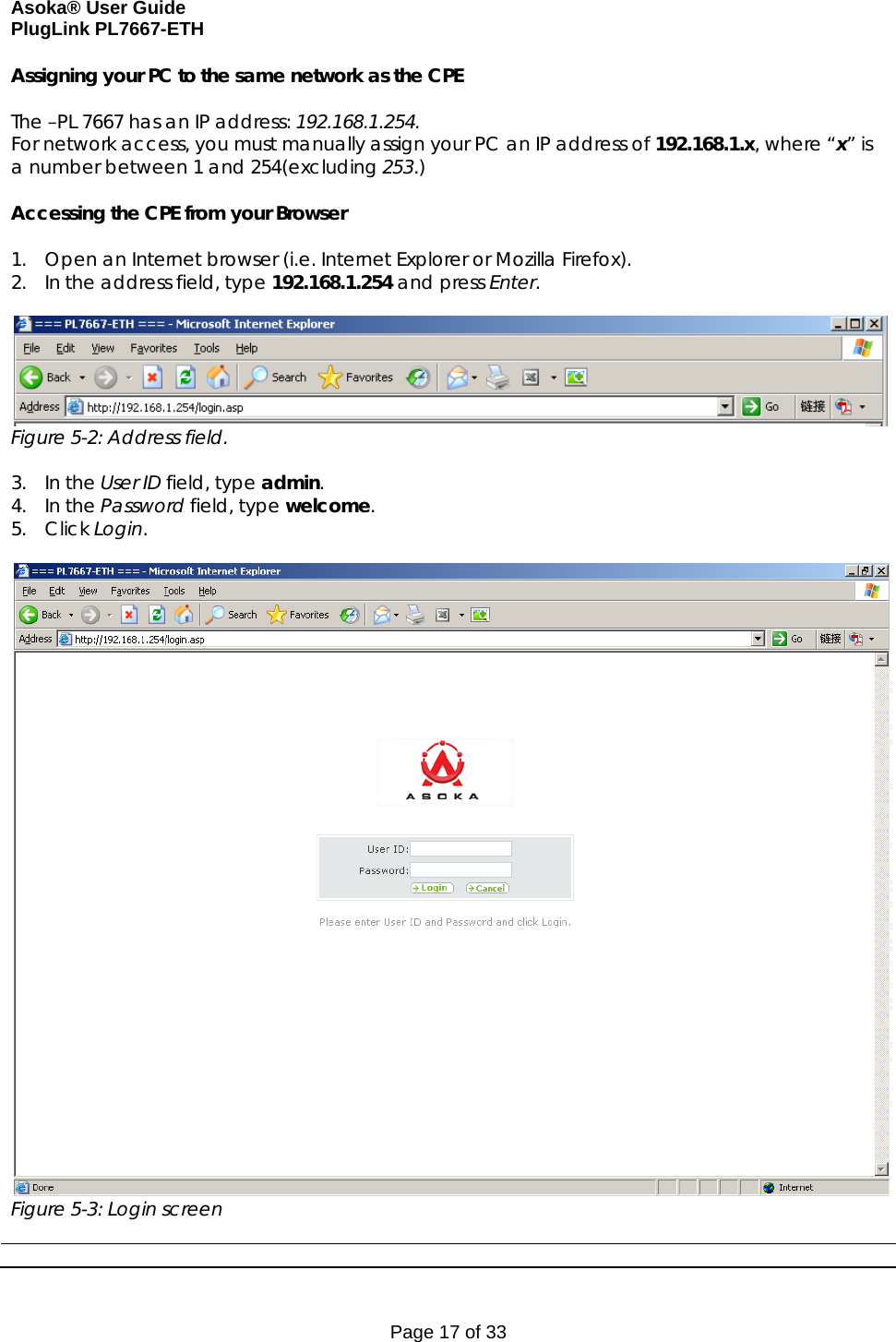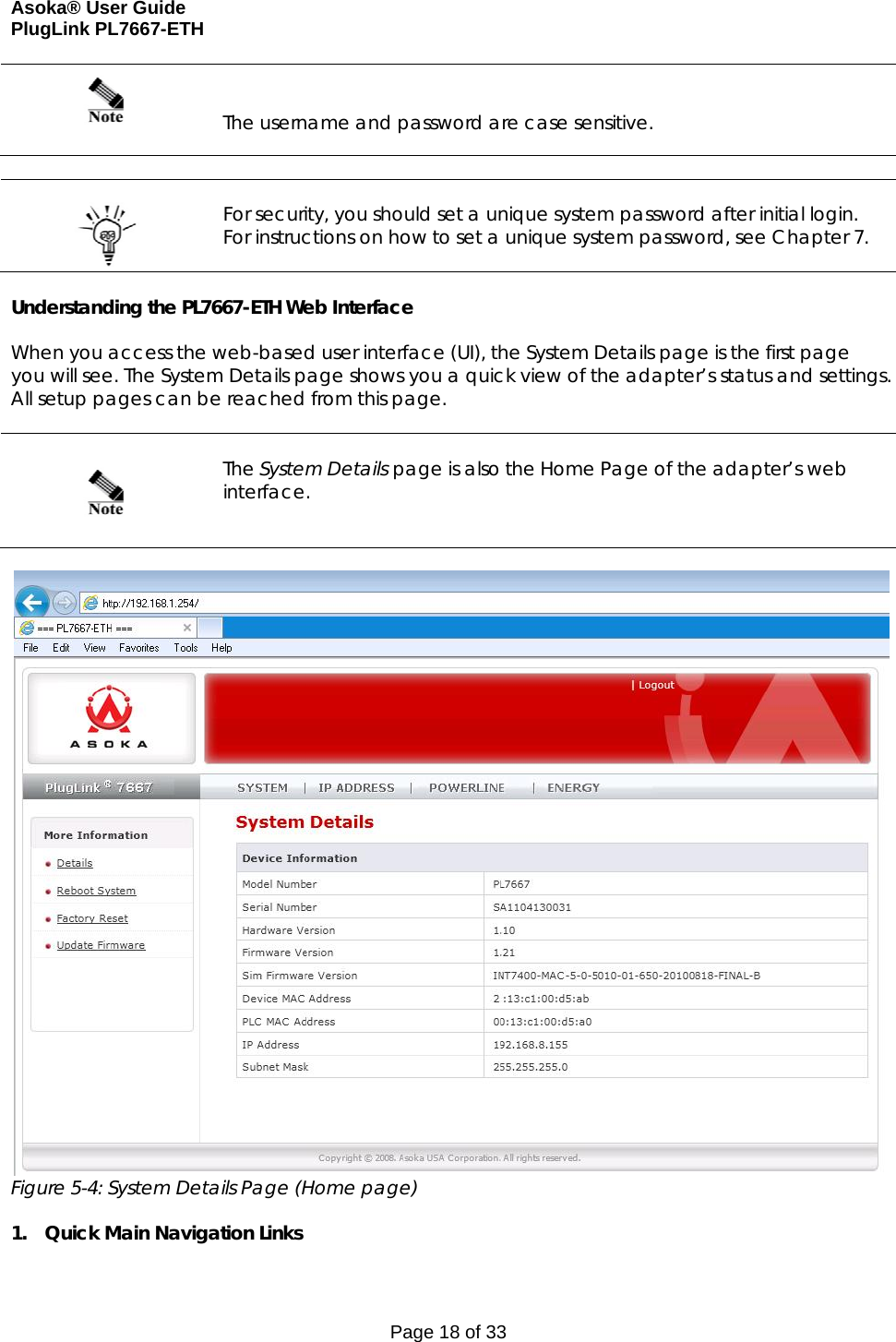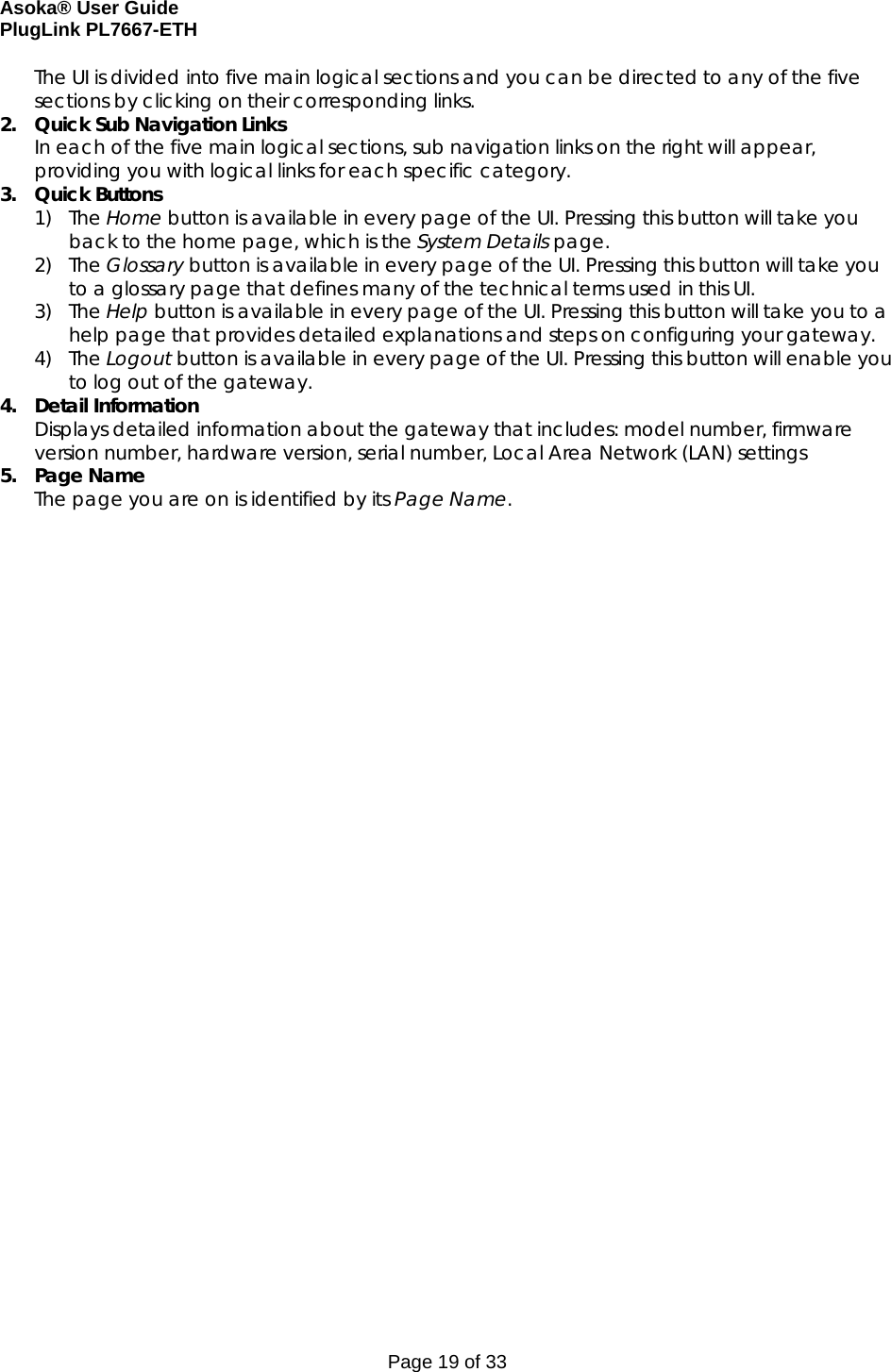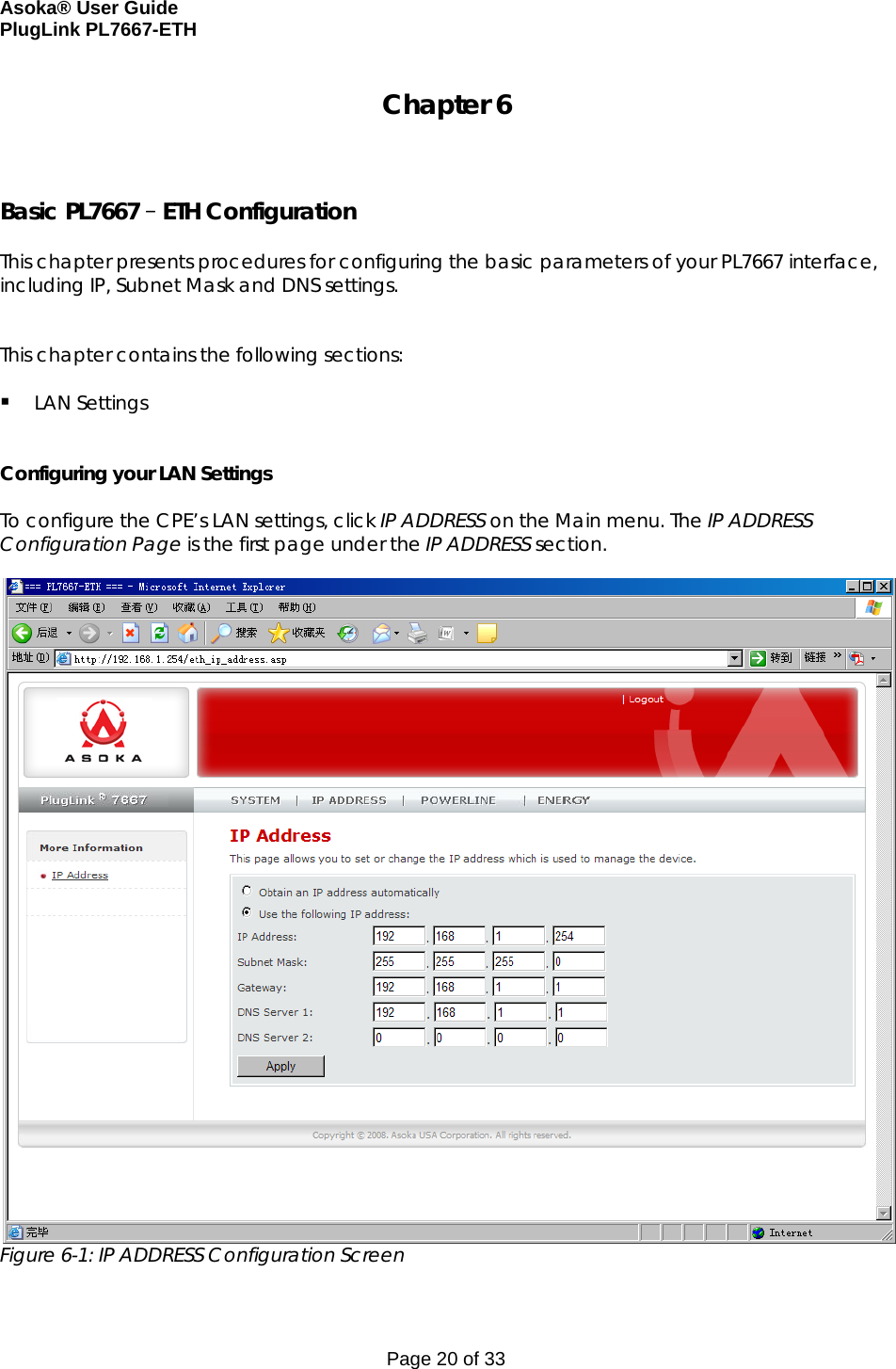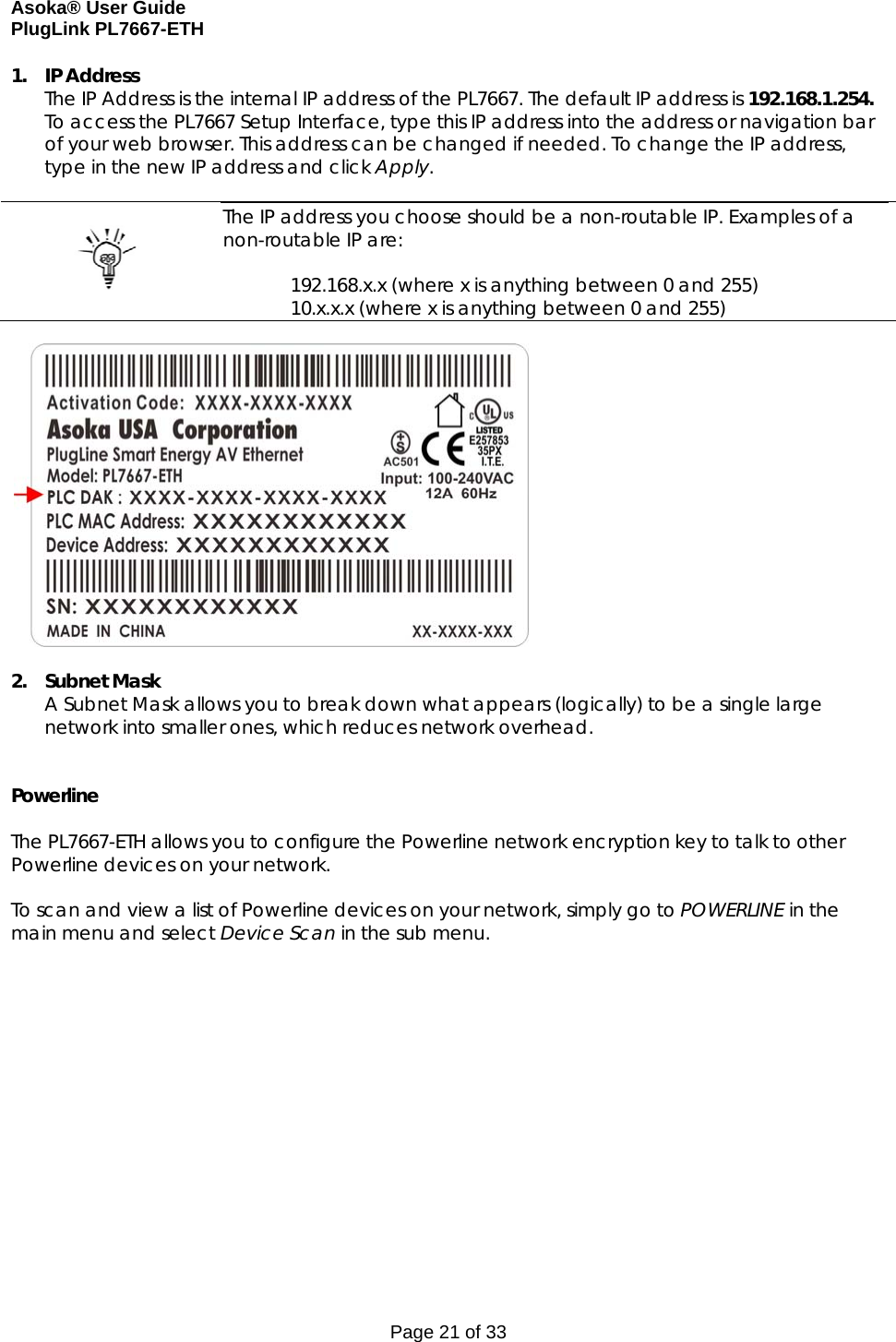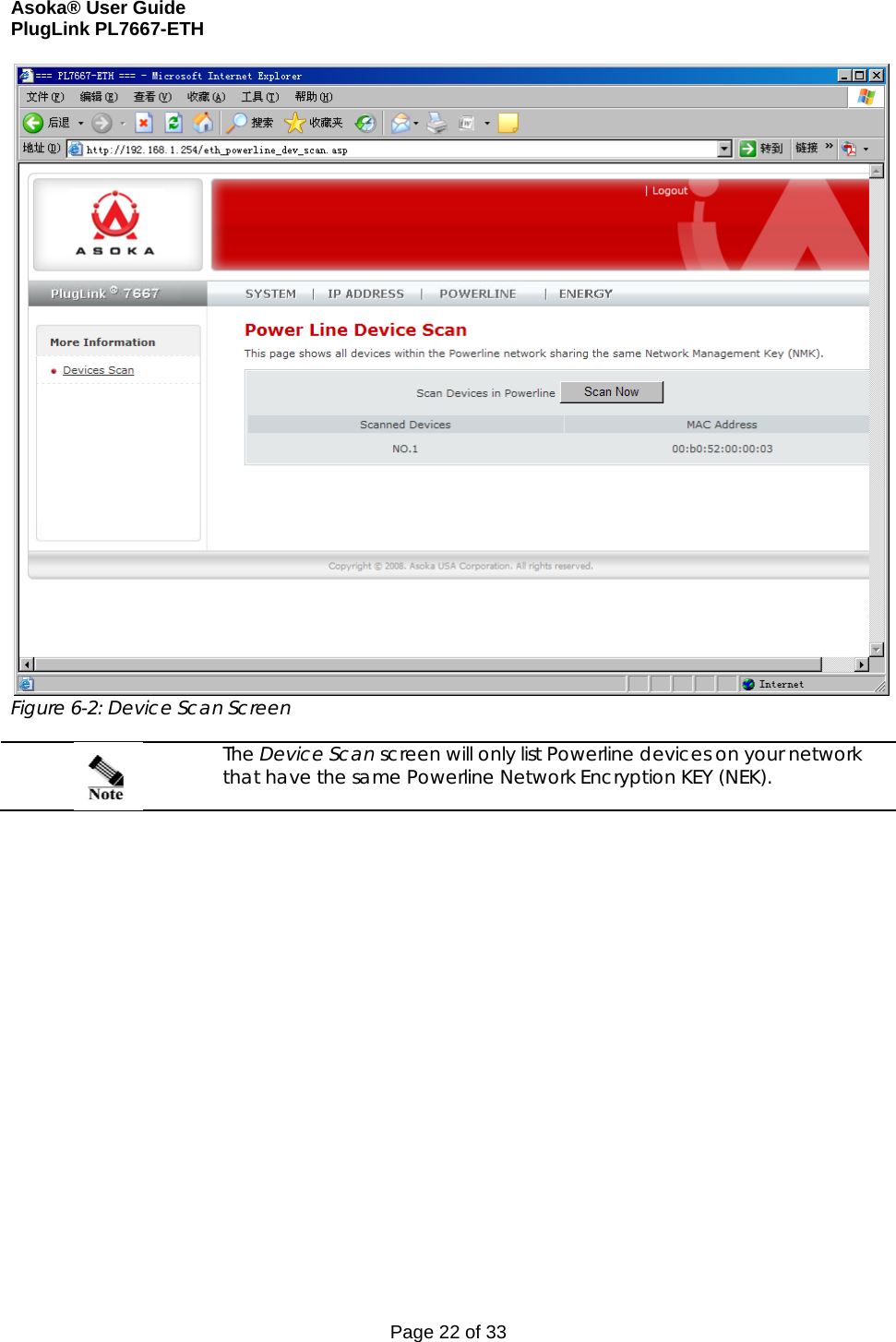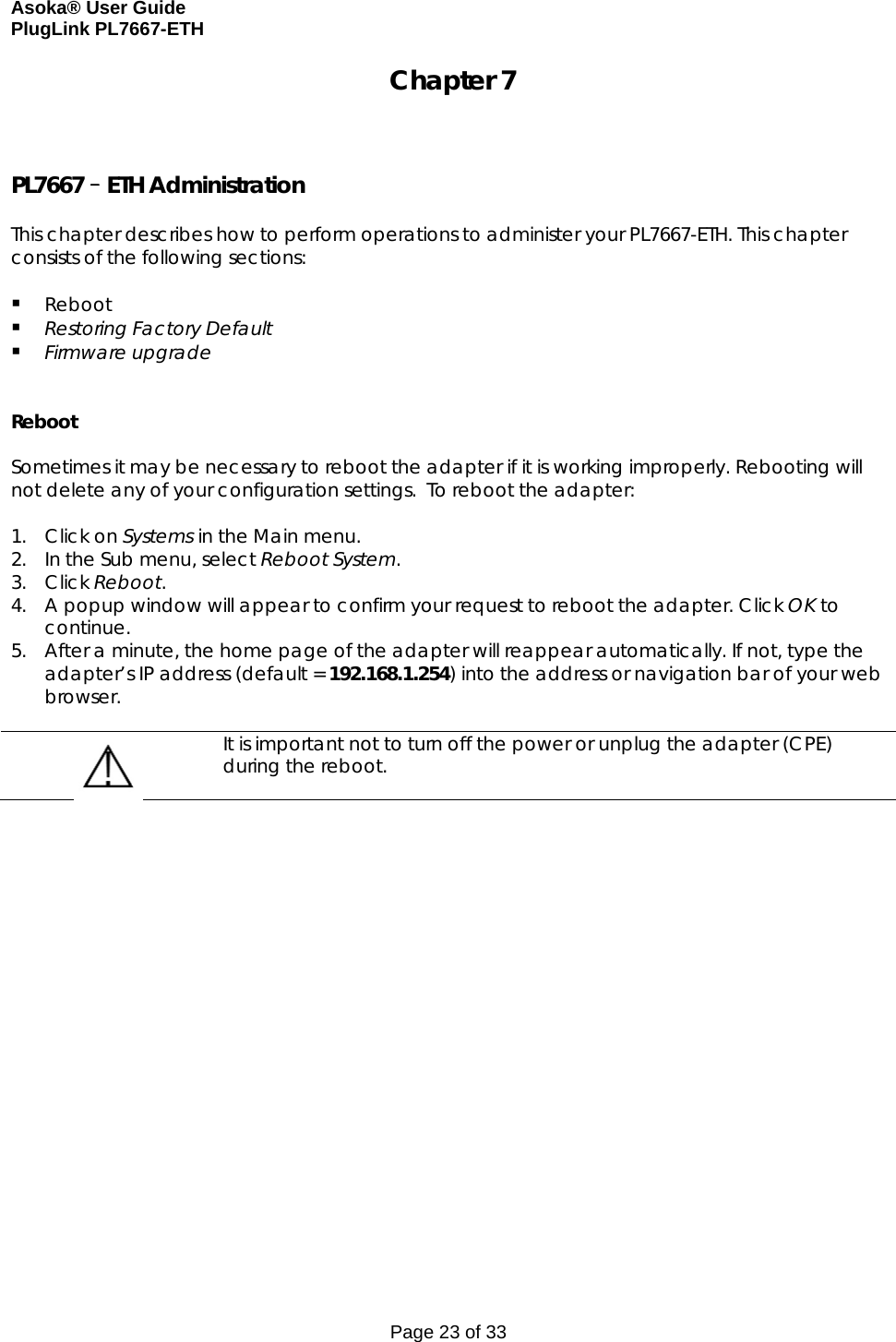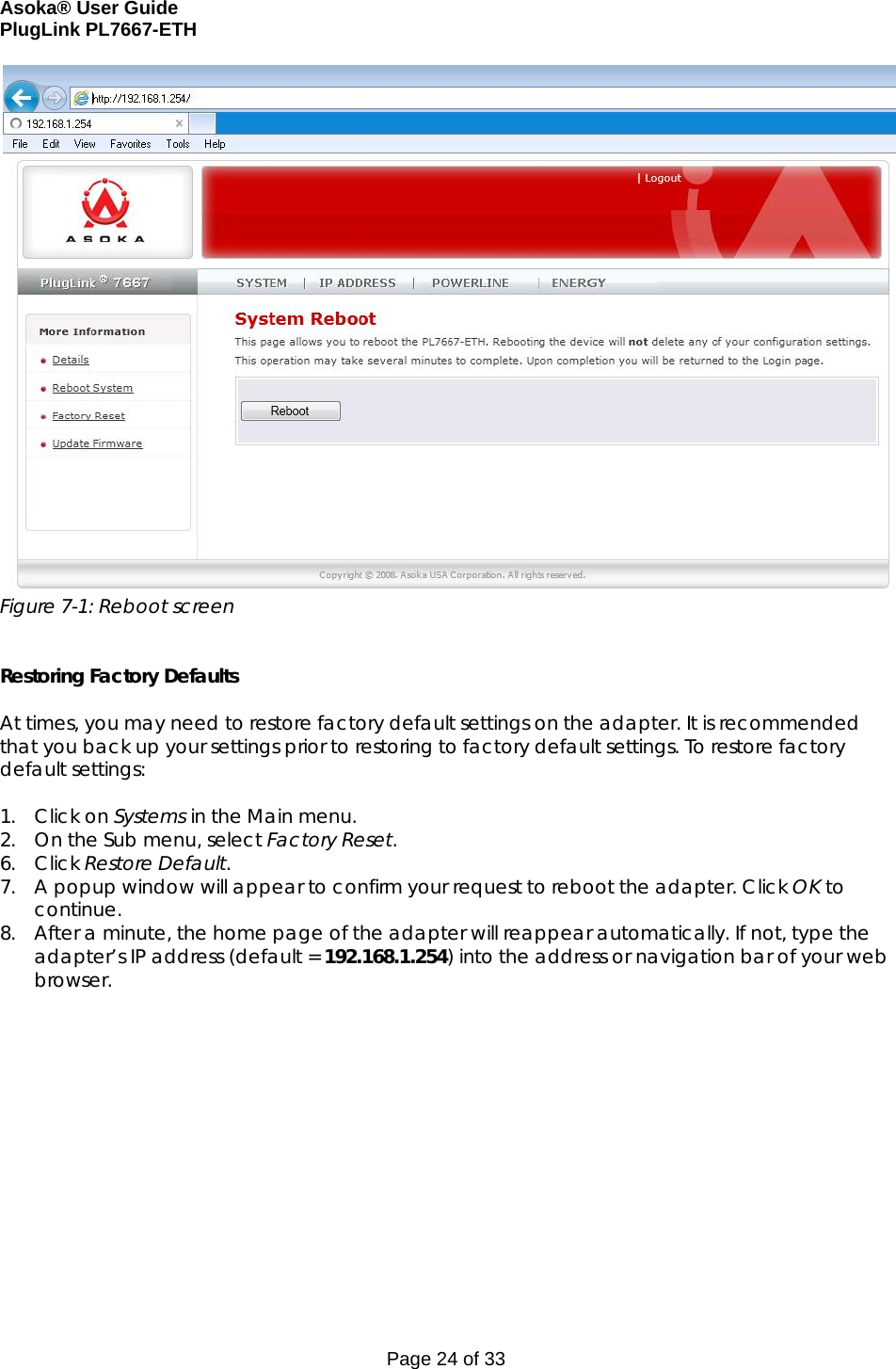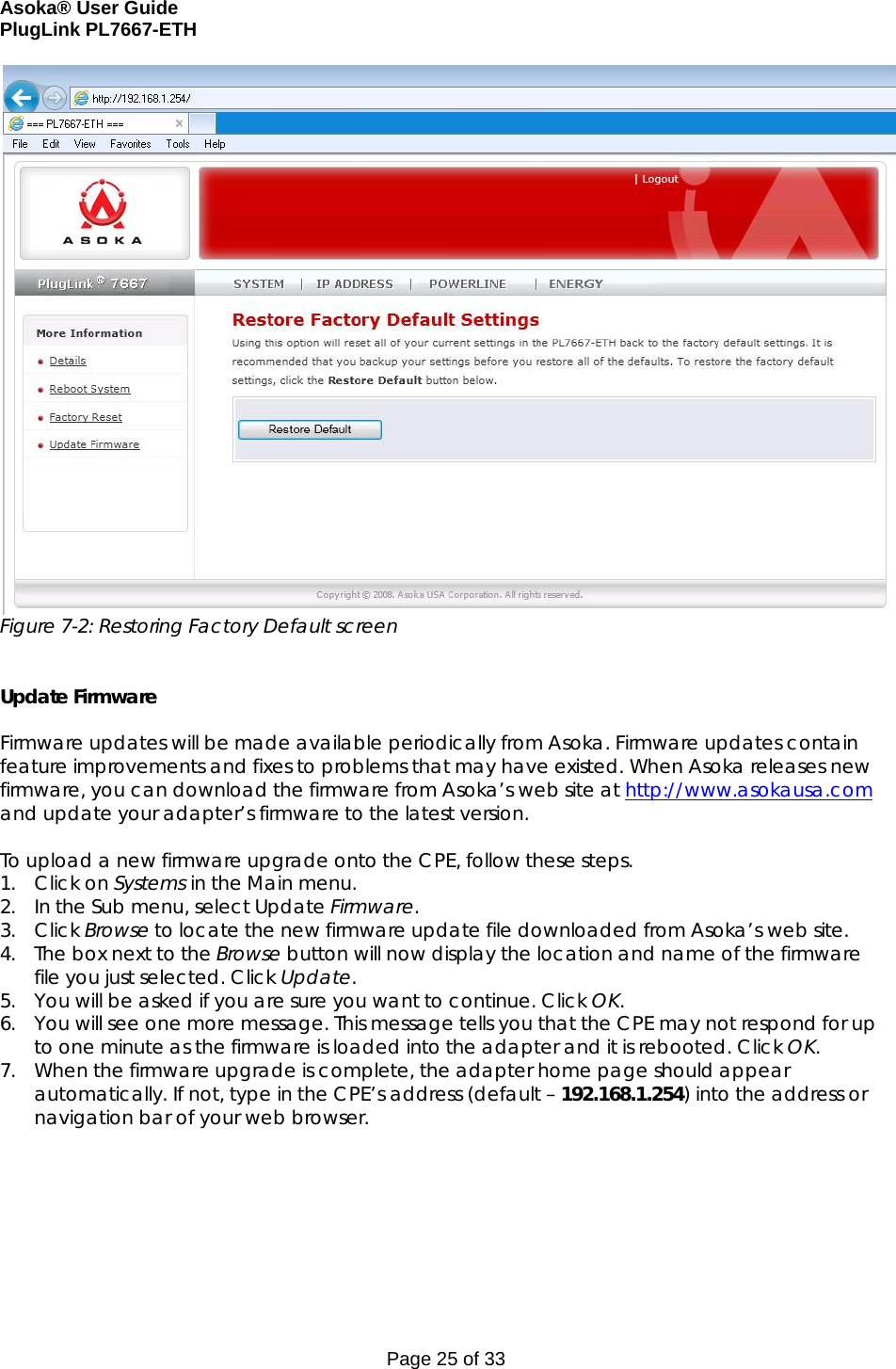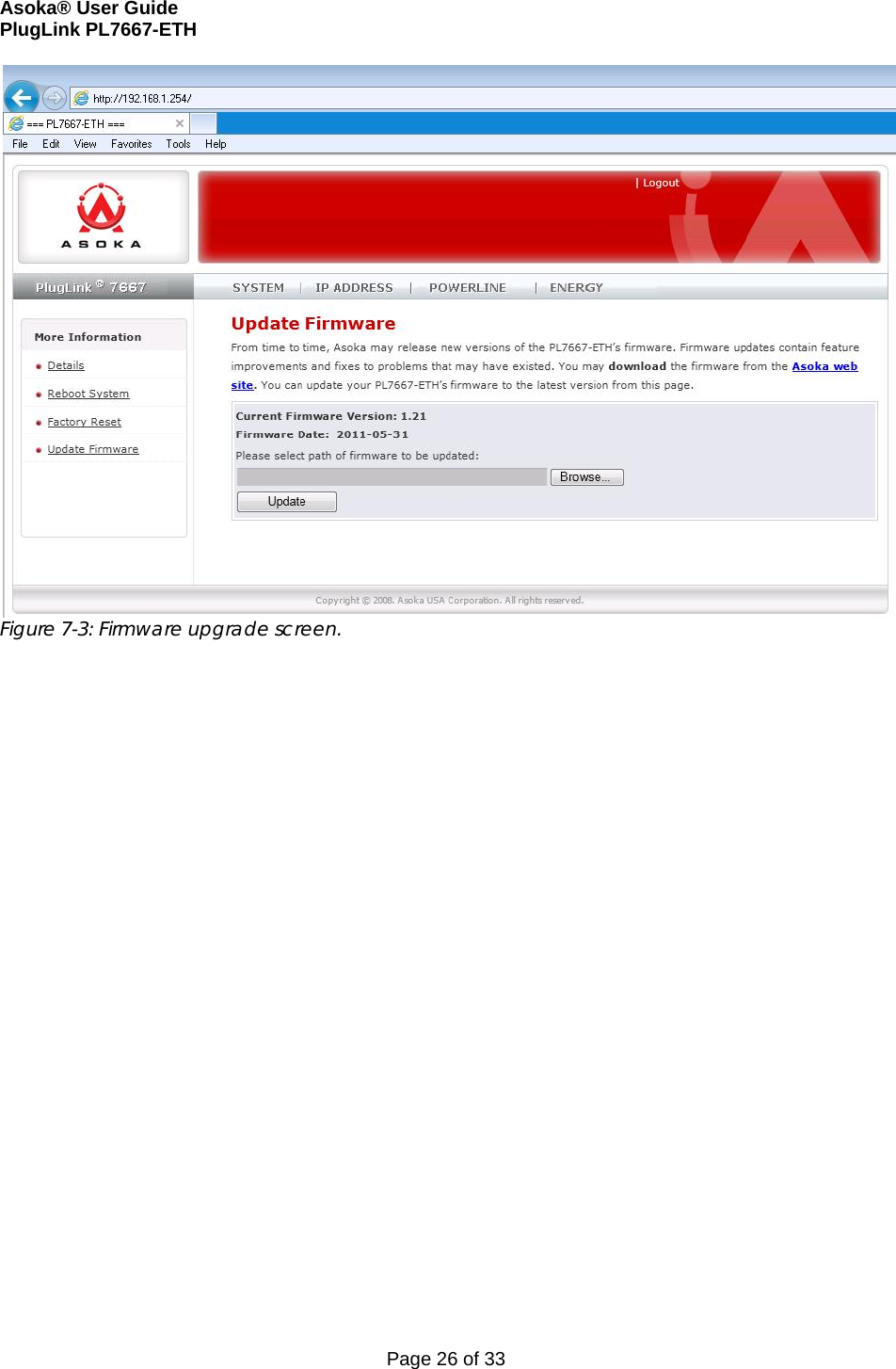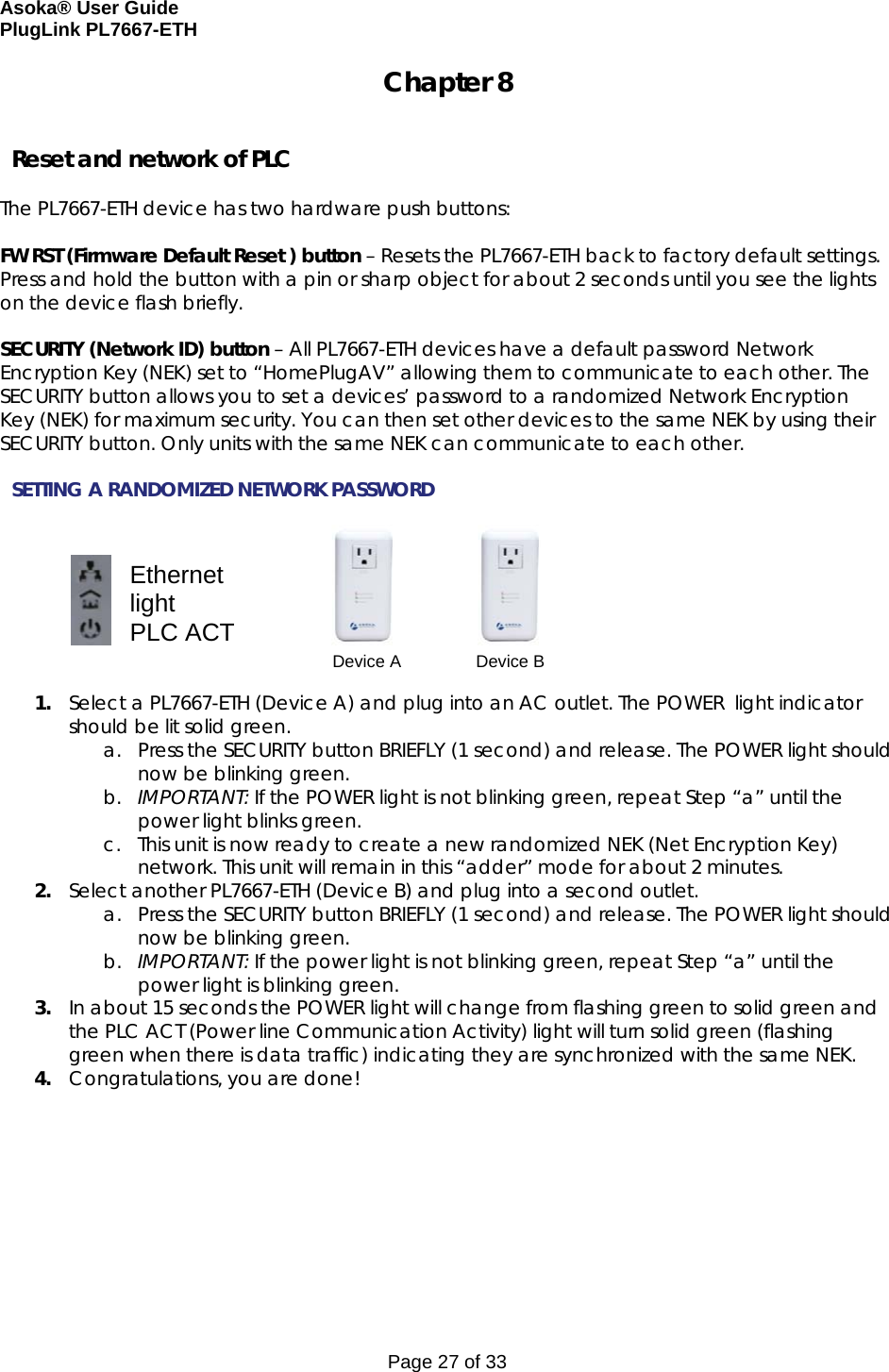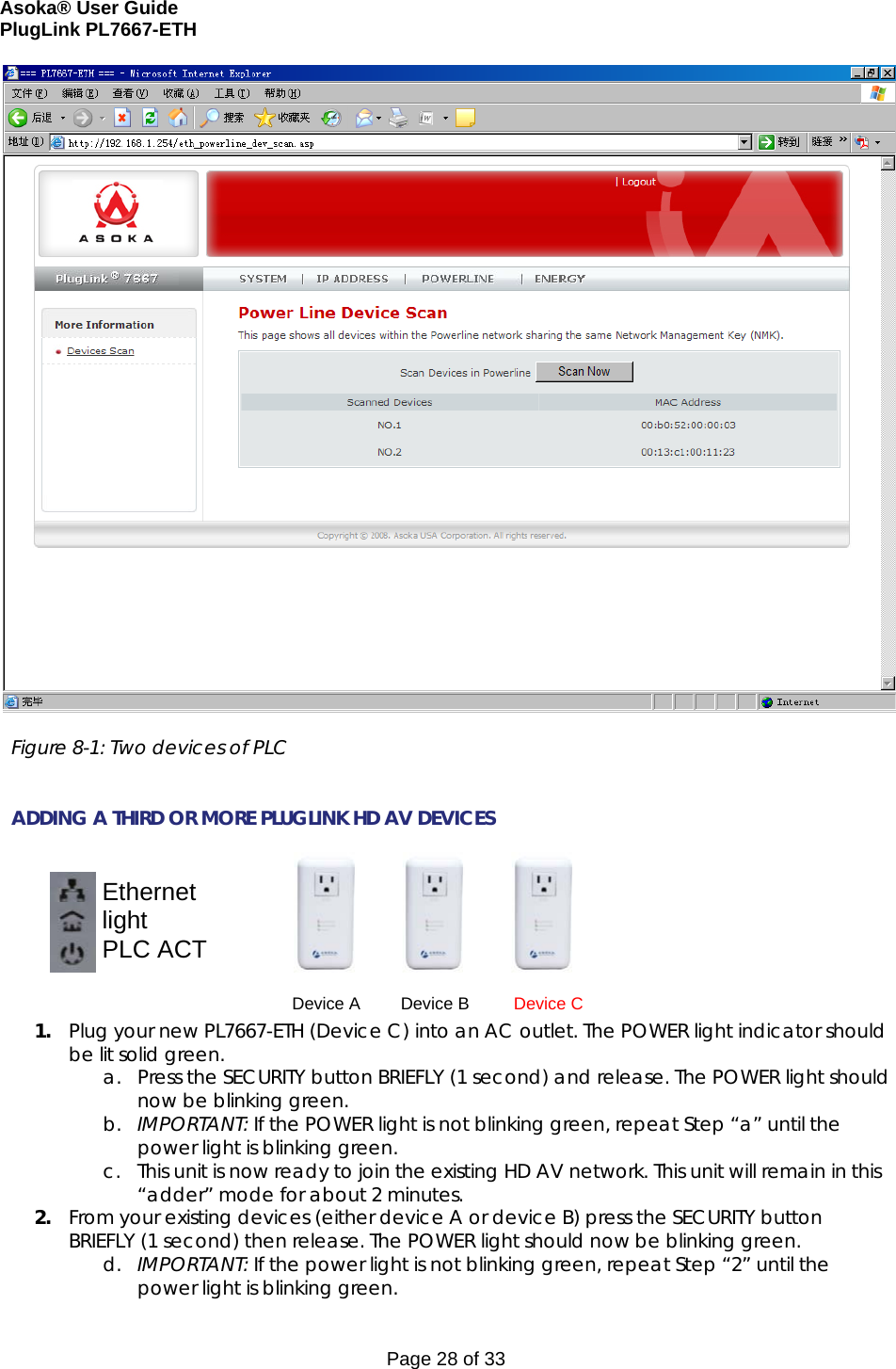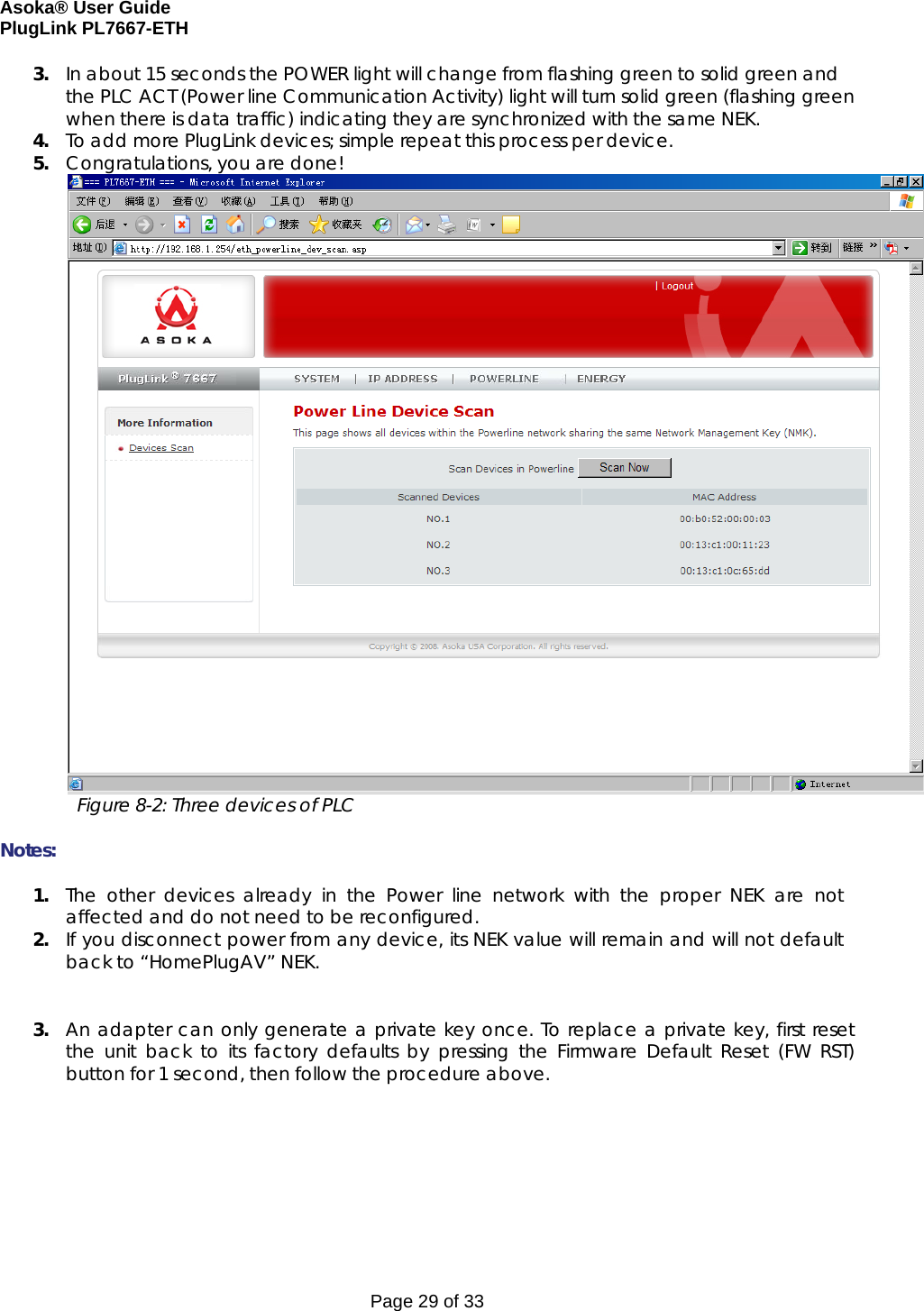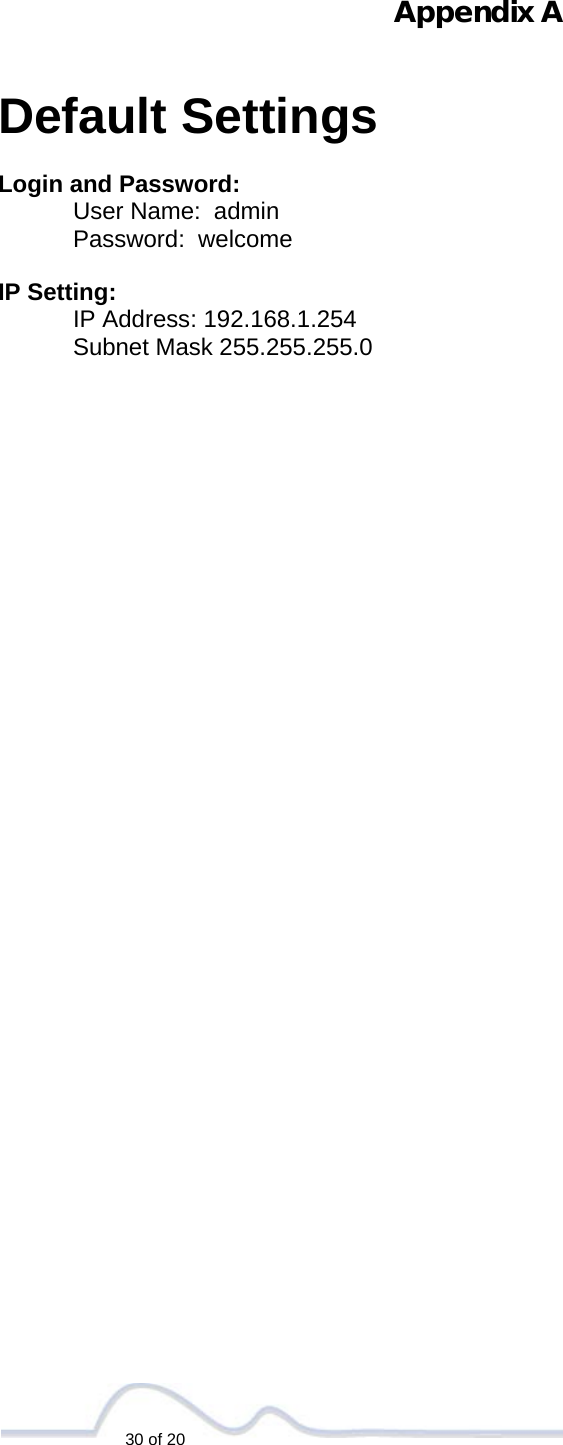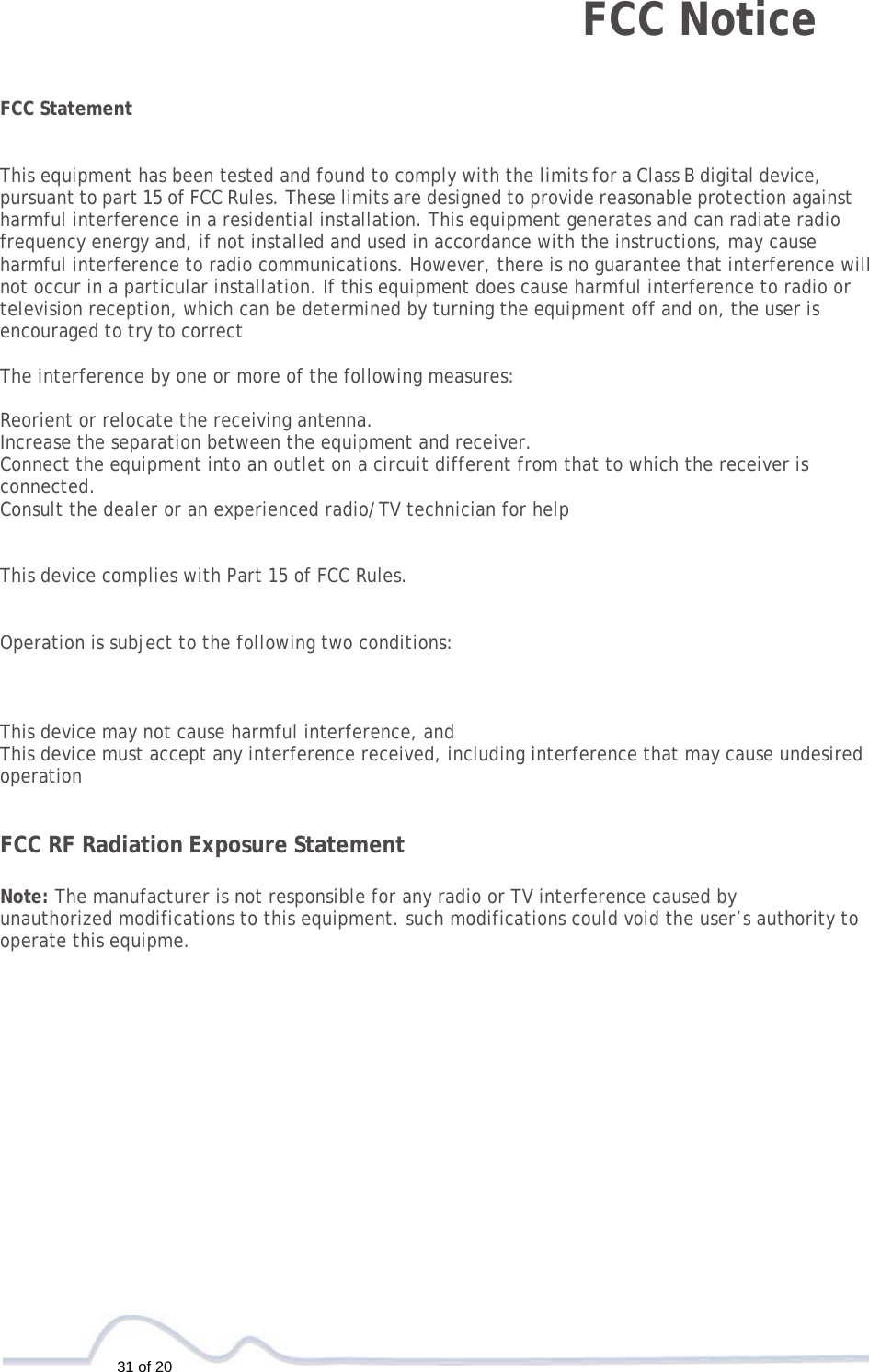ASOKA USA PL7667-MST-ETH PlugLine Smart Energy AV Master/Ethernet User Manual PL7667 ETH Users manual 20130913
ASOKA USA Corporation PlugLine Smart Energy AV Master/Ethernet PL7667 ETH Users manual 20130913
Contents
- 1. PL7667-ETH Users manual-20130913
- 2. PL7667-MST Users manual -20130913
PL7667-ETH Users manual-20130913
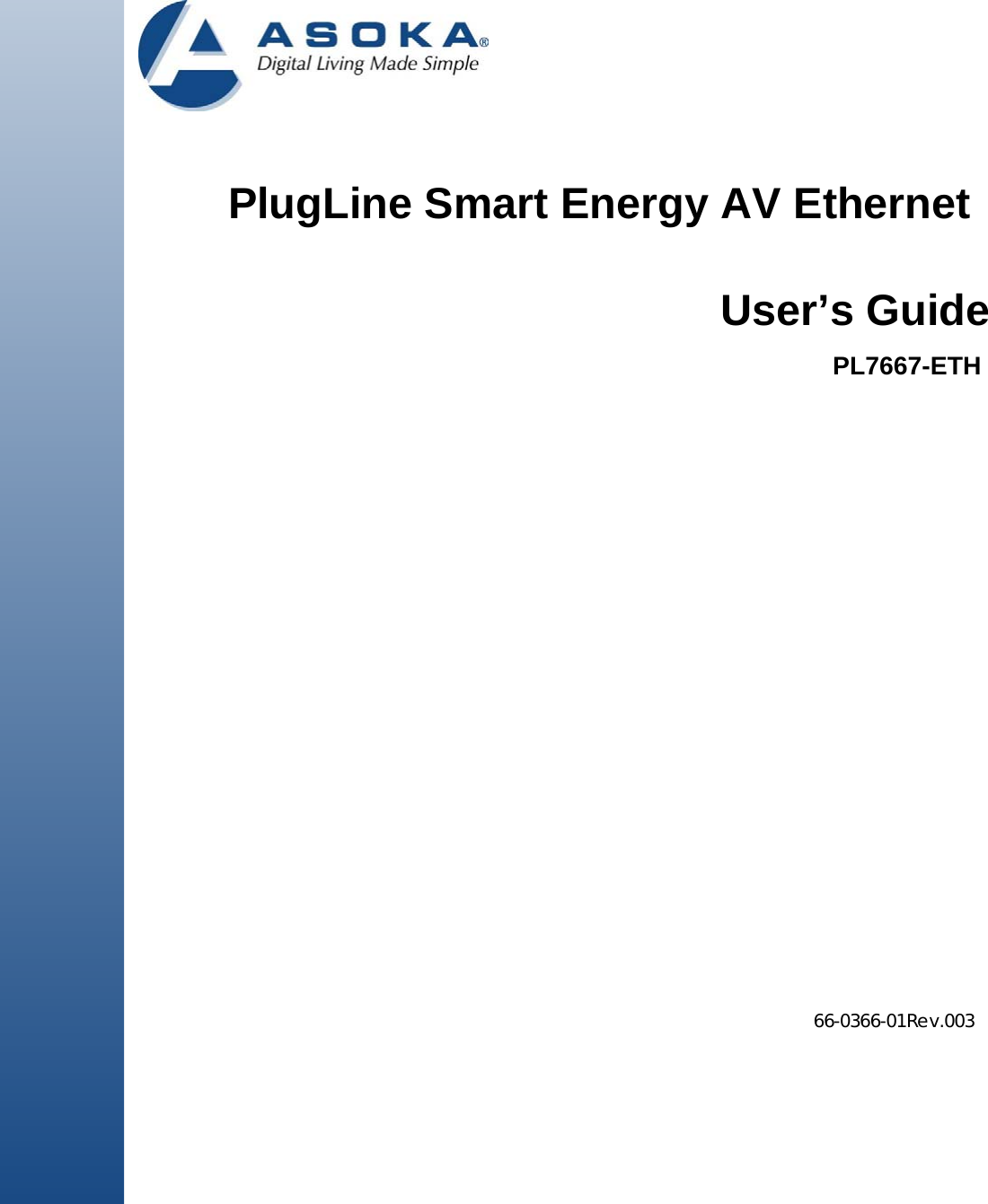
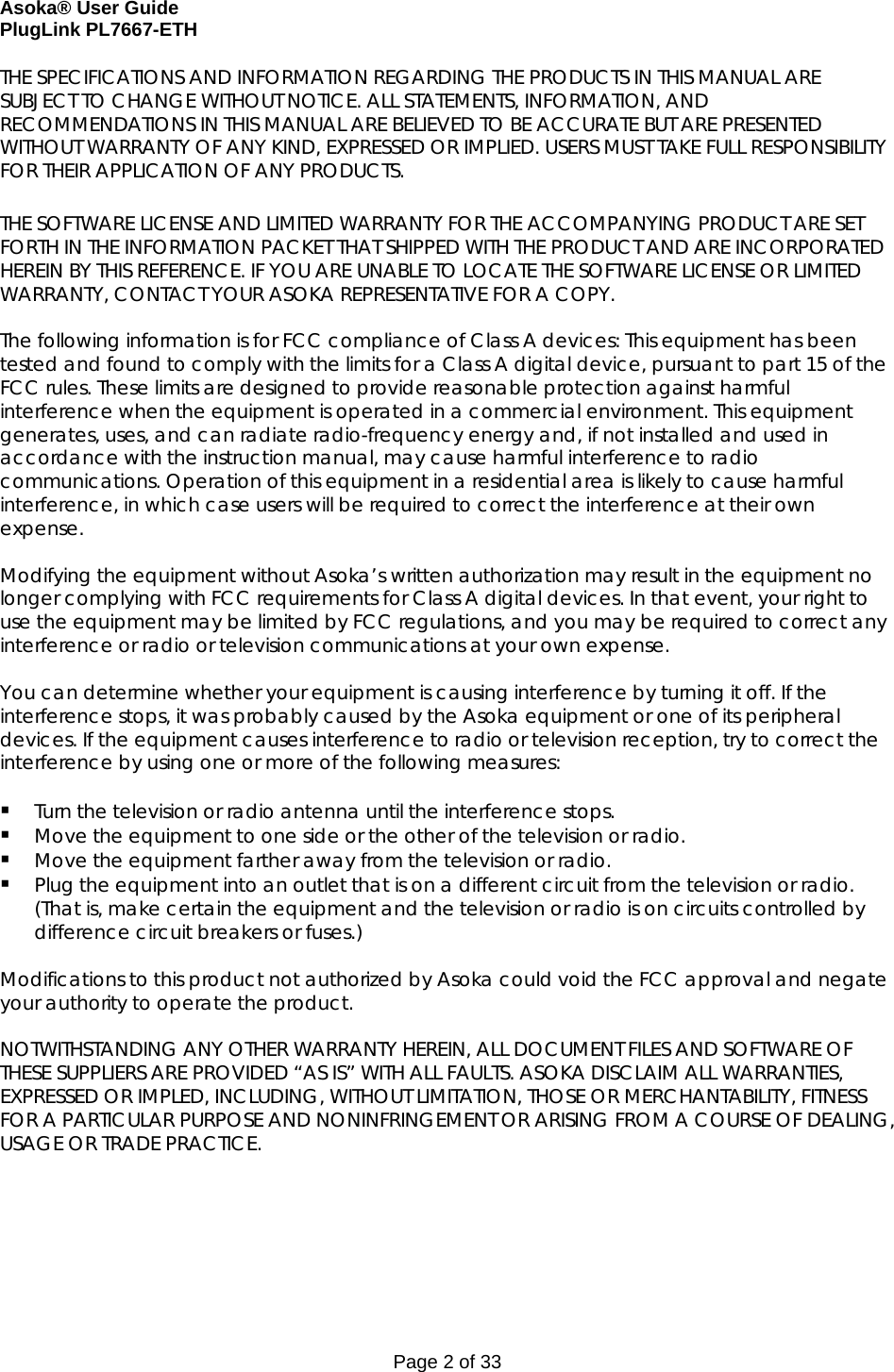
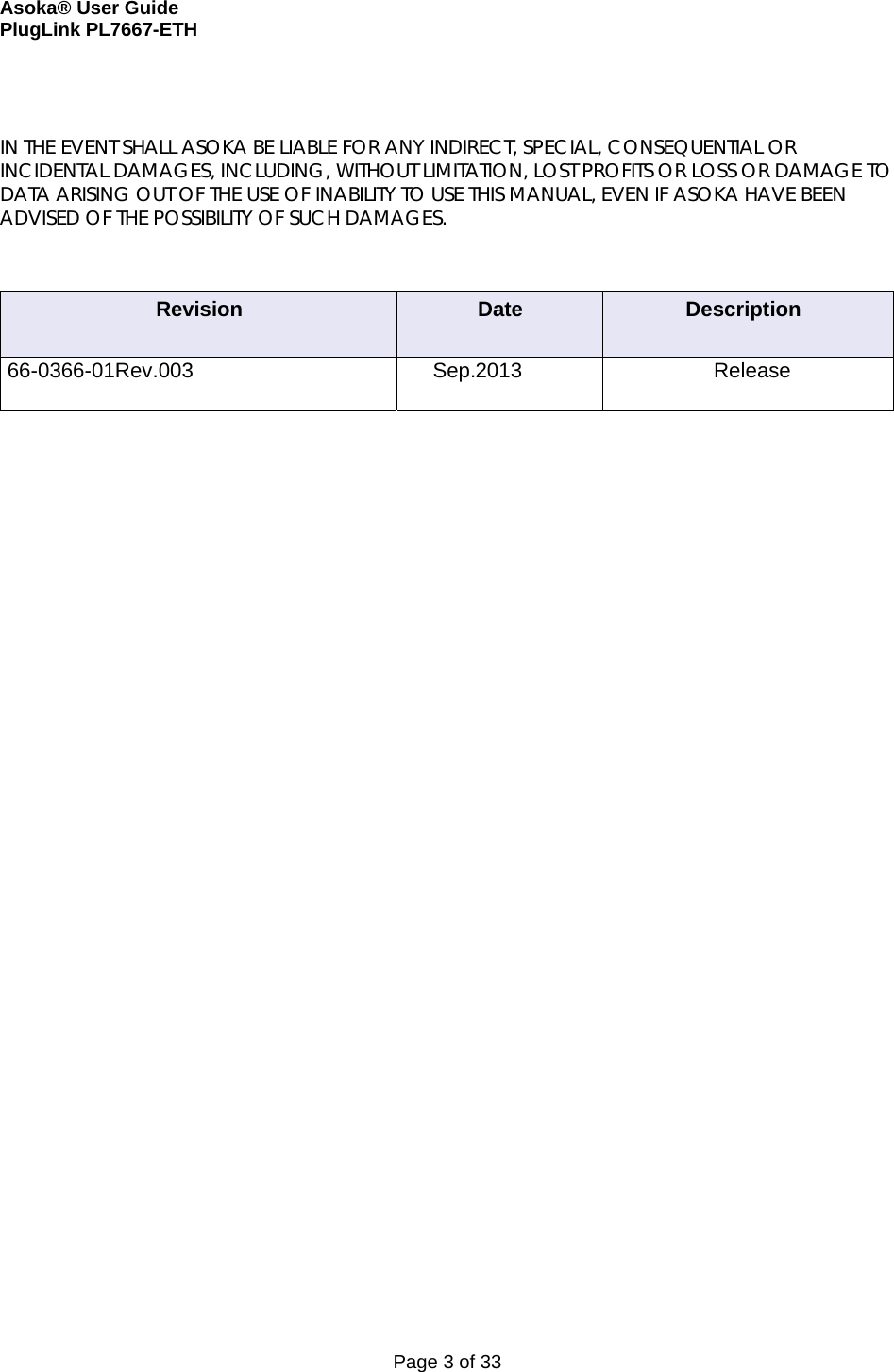
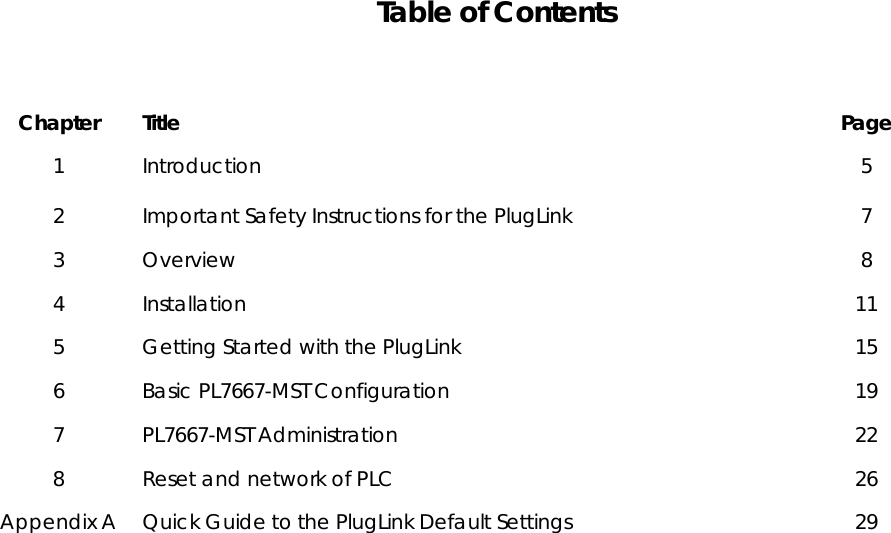
![Asoka® User Guide PlugLink PL7667-ETH Page 5 of 33 Chapter 1 Audience This guide is designed as a reference for the networking or computer technician responsible for installing a PlugLink PL7667-ETH, hereafter referred to as the gateway. It is assumed that you are familiar with and have a working knowledge of the concepts and terminology associated with Ethernet and local area networking. Purpose This guide describes the hardware and software features of the PlugLink PL7667-ETH. It describes the physical and performance characteristics of the PL 7667-ETH, explains how to install and configure the PL7667-ETH, and provides troubleshooting information and specifications. Conventions This guide employs the conventions described below to convey instructions and information. Command descriptions use the following conventions: Commands and keywords are in italic text. Arguments for which you supply values are in bold. Square brackets ([ ]) indicate optional elements. Braces ({ }) group require choices and vertical bars (|) separate the alternative elements. Braces and vertical bars within square brackets ([{|}]) indicate a required choice within an optional element. Interactive examples use the following conventions: Terminal sessions and system displays are in normal screen font. Information to be entered in is in bold text. Notes, cautions and tips use these conventions and symbols: Means reader take note. Notes contain helpful suggestions or references to materials not contained in this manual. Means reader be careful. In this situation, you might do something that could result in equipment damage or loss of data. Means the following will help you solve a problem. The tips information might not be troubleshooting or even an action, but could be useful information. Obtaining Documentation](https://usermanual.wiki/ASOKA-USA/PL7667-MST-ETH.PL7667-ETH-Users-manual-20130913/User-Guide-2105619-Page-5.png)
